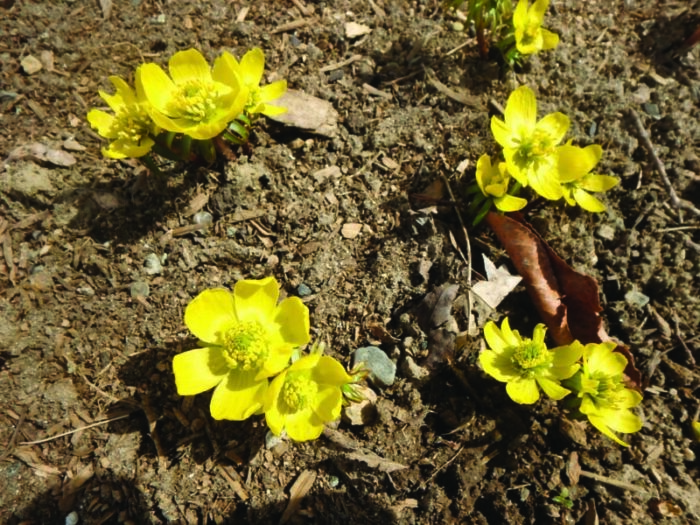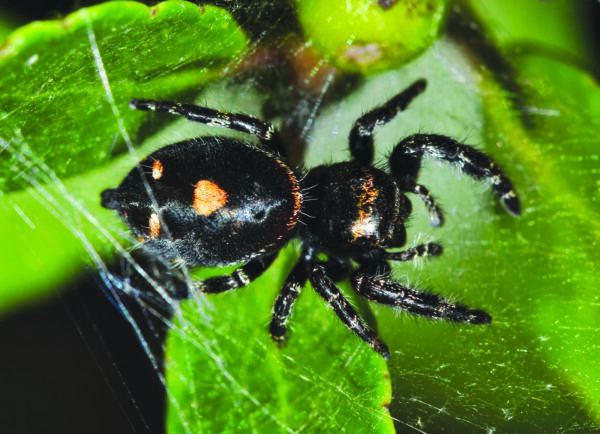How to create early spring arrangements
I miss being able to go to my garden and pick flowers for the table. Yes, spring is on the way and even feels present on good days now. But it will be a while until my daffodils and tulips bloom. My winter aconite, small yellow bulb flowers, are blooming, and little white snowdrops have pushed through frozen earth. Those mini-flowers aren’t really suitable for a bouquet, but I’ve picked a few things that please me.
First, I picked some stems from my Merrill magnolia. It is loaded with fuzzy buds for its late-April blooming, and these look good in an arrangement. Magnolia branches tend to fork and grow in different directions, so placing stems in a vase can be tricky. I put some in a dry vase with dried flowers and seed-bearing stems and one in a vase with water to put on a windowsill. The buds I picked on Jan. 31 bloomed on March 17.
Beech branches are good for arrangements, too. The young trees, anyway, hold onto their light brown leaves, filling spaces in a vase. And the stems are a smooth gray, with cigar-shaped, pointy buds.
Of course red- or yellow-twigged dogwood stems add color to a winter arrangement. Each year one must cut back the plants in spring or winter to get the color on the new stems. They are fast-growing plants, so they can grow 5 feet of new stem in a single summer. They grow best in moist or marshy places.
For contrast in my vase I like to have some dark stems. Trees in the cherry family do well there. Chokecherry, pin cherry and black cherry look good in a vase. Young white birch have dark stems, as does hop hornbeam. But basically you can pick any tree branches if you like their look.
Greenery is nice for contrast with bare stems. I recommend white pine for greenery. It has a nice weeping tendency and is great around the outside of the vase. Unlike Canadian hemlock, it holds onto its needles quite well, but hemlocks are more common on my property, so I often use them.
Then there are the hydrangeas. Many species and varieties hold onto their flower panicles well into winter and can be quite nice in a vase. My favorite is one called Pink Diamond. It has long stems and it holds onto the fertile and infertile inflorescences, showing contrast between white and black florets on the panicles. Although the blossoms are pink toward the end of their bloom cycle, they are not pink after frost.
Winter weeds can be interesting, too. One of my favorites for winter picking is teasel. Technically, this is a biennial weed. I harvested some seeds from a corn field in Ohio years ago. The corn farmer thought I was a total nutcase because to him teasel is a noxious weed. But I have learned its habits and allow just half a dozen plants to flower and produce seed every year, and it is a delightful addition to winter arrangements.
The key to keeping teasel in check is to recognize the first-year plants. They are rosettes of light green leaves. I pull most, but leave half a dozen to mature and bloom in Year 2. The second year plants are loaded with thorns and have a deep tap root, so if you pull them then, you must wear gloves. I rub the thorns off while wearing gloves as I pick them, and can then handle them with ease when arranging them in a vase.
Astilbes bloom magnificently for me, and their winter stems are great in a dry vase. I have many different species and varieties ranging from short (12-inch blossom stems) to tall (48 inches). Their chief requirement is moist soil, and I have plenty of that. If you don’t have moist soil, the leaves will brown up in the heat of summer. One trick I have tried in dry locations is to bury a plastic bag a foot or so deep in the soil before planting. That will act like a little bathtub and hold some water in dry times. They like a half day of sunshine, and prefer morning sun.
Snake root or black cohosh (formerly called Cimicifugaspp. Now in the genus Actea) holds on to dry blossoms long after summer has passed. They look good in dry arrangements if you have any still standing.
Winter arrangements tend to be fairly monochromatic — tan or brown colors are most common. I have seen gardeners use dry allium (onion-family) blossoms to bring color to the table by spray-painting them with red, blue, purple and yellow spray paints. I have never done so, but if I think to harvest some next spring or summer, I may do so. I have even seen them sprayed while still in the garden!
Of course, the best color in the house for me right now is my forced daffodils. Last fall I potted up plenty of “tete-a-tete” daffodils and I kept them in my cold cellar until recently. Each bulb provided many blossoms and even now, after the flowers have gone by, they are still pleasant-looking with green leaves and dried yellow flowers.
Featured photo: Winter aconite. Courtesy photo.






